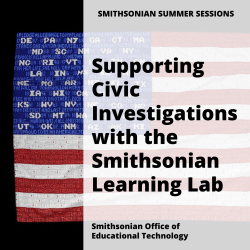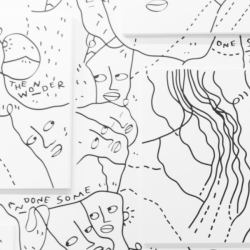Tess Porter
I'm the former User Experience Strategist at the Smithsonian Office of Educational Technology. Here, I focused on the use of digital museum resources to support teaching and learning. My work draws on my experience as a museum educator, digital analyst, usability researcher, and content designer. I hold a B.A. in Anthropology and a B.A. in Art History from University Colorado Boulder, and an M.S. in Museums and Digital Culture with an Advanced Certificate in User Experience from Pratt Institute.
Tess Porter's collections
Portrait Analysis: Lili'oukalani
 Tess Porter
Tess Porter
Flashcard Activity: Asian Pacific American Resources
 Tess Porter
Tess Porter
Flashcard Activity: Conflict, Identity, and Place in American Art
 Tess Porter
Tess Porter
Korean Art: Exploring Artistic Practices
 Tess Porter
Tess Porter
Korean Ceramics: Looking at Decorative Processes
 Tess Porter
Tess Porter
Woody Guthrie: Examining Portraiture
 Tess Porter
Tess Porter
Exploring Complexity: Westward the Course of Empire Takes Its Way
 Tess Porter
Tess Porter
What Makes You Say That?: Civil War Photograph
 Tess Porter
Tess Porter
Bracero Program: Step In, Step Out, Step Back
 Tess Porter
Tess Porter
Community Building through Art
 Tess Porter
Tess Porter
Supporting Civic Investigations with the Smithsonian Learning Lab
 Tess Porter
Tess Porter
Exploring Identity with Playful Art-Making: Shantell Martin
 Tess Porter
Tess Porter




